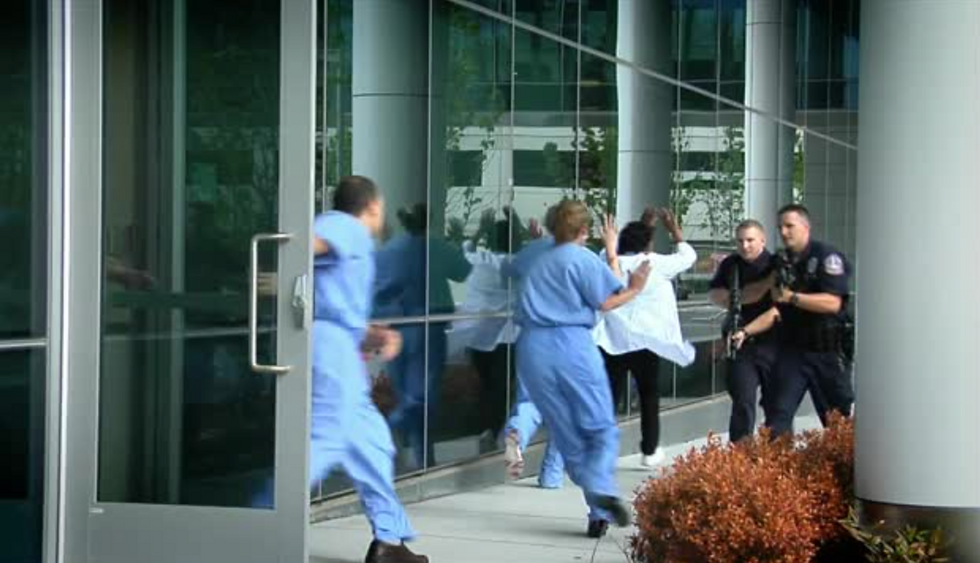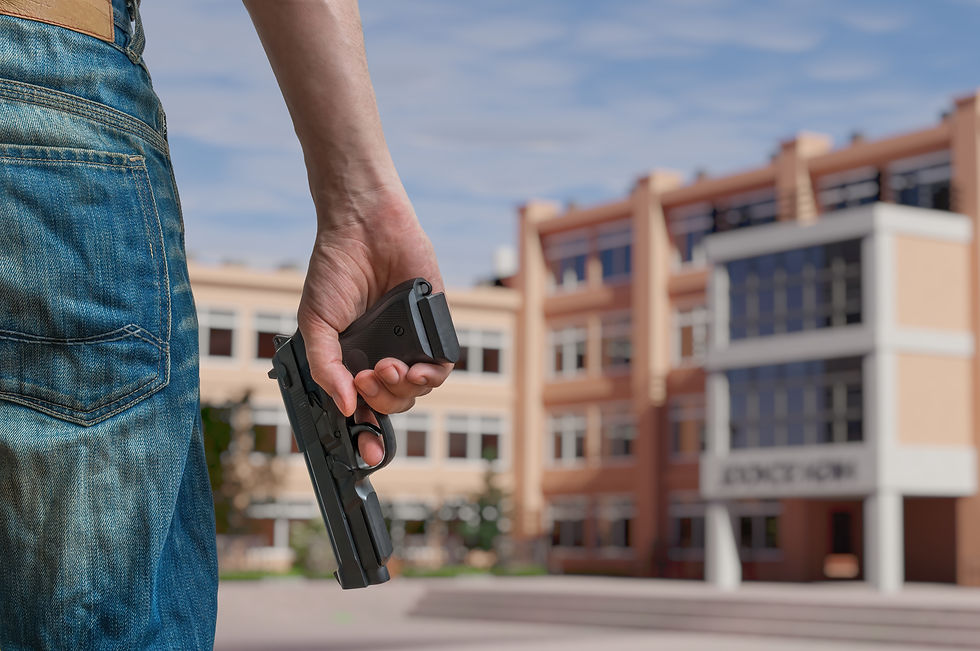Active Shooter Response and Prevention in Healthcare: Ensuring Safety in a Vital Environment
- gene423
- Sep 15
- 4 min read
Introduction

In today's world, the unfortunate reality is that active shooter incidents can occur in any setting, including healthcare facilities. As a retired SWAT commander with over 30 years of experience in law enforcement and private security, I have witnessed firsthand the devastating impact of such events. In this article, we will delve into the critical topic of active shooter response and prevention in healthcare settings. Our goal is to provide healthcare professionals and administrators with practical insights and strategies to enhance safety and protect lives in these vital environments.
Understanding the Unique Challenges in Healthcare Settings
Healthcare facilities, whether hospitals, clinics, or long-term care centers, present distinct challenges when it comes to active shooter incidents. The primary focus in these settings is patient care and preserving life, which can conflict with immediate evacuation or lockdown procedures. Additionally, healthcare facilities house a wide array of vulnerable individuals, including patients with limited mobility or cognitive impairments. To effectively respond to active shooter situations, healthcare professionals must be prepared with specialized training and protocols that address these unique challenges.
Comprehensive Risk Assessment for Healthcare Facilities

One of the first steps in developing an effective active shooter response plan is conducting a comprehensive risk assessment tailored specifically for healthcare settings. This assessment should evaluate factors such as facility layout, patient population, security systems (are they working?), and existing emergency response protocols. By identifying vulnerabilities and potential areas of improvement, healthcare organizations can proactively implement targeted strategies to mitigate risks and enhance preparedness.
Building a Culture of Awareness and Preparedness

Creating a culture of awareness and preparedness is crucial in preventing and responding to active shooter incidents. Training programs should be developed to educate healthcare staff on recognizing warning signs, reporting suspicious activities, and understanding the protocols for responding to an active shooter event. Regular drills and exercises can also help familiarize staff with emergency procedures and ensure efficient coordination during high-stress situations.
Designing Security Measures for Healthcare Facilities
Implementing appropriate security measures is vital for safeguarding healthcare facilities against active shooter threats. These measures should strike a balance between maintaining a welcoming environment for patients and visitors while ensuring robust protection against potential threats.
Access Control Systems and Physical Security Measures
Effective access control systems play a pivotal role in preventing unauthorized individuals from entering restricted areas. Implementing measures such as ID badges, key cards, and secure entry points can significantly enhance security. Additionally, physical security measures like surveillance cameras, panic buttons, and duress alarms can provide immediate alerts to staff and law enforcement, allowing for a swift response.
Collaborative Partnerships with Law Enforcement
Establishing collaborative partnerships with local law enforcement agencies is a crucial aspect of active shooter prevention in healthcare settings. Regular communication, joint training exercises, and sharing of intelligence can significantly improve response capabilities. By involving law enforcement early on in the development of security protocols, healthcare facilities can benefit from their expertise and ensure a coordinated and effective response during crisis situations.
Crisis Communication and Incident Response
Effective crisis communication and incident response protocols are vital for ensuring the safety of both staff and patients during an active shooter event. Clear lines of communication, well-defined roles and responsibilities, and rapid dissemination of information can save lives and minimize panic.
Establishing a Communication Hierarchy
Establishing a communication hierarchy within healthcare facilities is essential to ensure effective communication during an active shooter incident. This hierarchy should define roles and responsibilities for key personnel, including the incident commander, security team, and public relations officers. By designating specific individuals to handle communication, healthcare organizations can ensure that accurate and timely information is disseminated to staff, patients, and the public.
Utilizing Technology for Communication and Response
Advancements in technology have revolutionized crisis communication and incident response capabilities. Healthcare facilities can leverage various tools to enhance communication and coordination during active shooter incidents. Examples include mass notification systems, mobile applications, and real-time communication platforms. These technologies enable instant alerts, updates, and instructions to be shared with staff, ensuring rapid response and informed decision-making.
Integrating Mental Health Support Services
Active shooter incidents can have a profound psychological impact on both survivors and witnesses. It is crucial for healthcare facilities to integrate mental health support services into their active shooter response plans. This can include on-site counselors, debriefing sessions, and resources for post-incident trauma recovery. By addressing the emotional well-being of individuals affected by such incidents, healthcare organizations can aid in the healing process and foster resilience within their communities.
Continuous Training, Evaluation, and Improvement
Active shooter response and prevention efforts in healthcare settings should be viewed as an ongoing process rather than a one-time endeavor. Regular training, evaluation, and improvement are essential to ensure preparedness and adapt to evolving threats.
Training Exercises and Drills
Healthcare facilities should conduct regular training exercises and drills to simulate active shooter scenarios and test the effectiveness of response plans. These exercises allow staff to practice their roles and identify areas for improvement. By conducting debriefings and incorporating lessons learned into future training sessions, healthcare organizations can continually enhance their preparedness and response capabilities.
Collaborative Learning and Knowledge Sharing
Sharing best practices, lessons learned, and case studies within the healthcare community is invaluable for advancing active shooter response and prevention. By fostering collaborative learning platforms and participating in professional networks, healthcare professionals can exchange ideas and stay updated on the latest trends, techniques, and technologies in the field. The power of collective knowledge and experience can significantly contribute to improving safety in healthcare settings.
Conclusion
As the threat of active shooter incidents persists in today's society, healthcare facilities must prioritize active shooter response and prevention efforts. By understanding the unique challenges, designing effective security measures, establishing crisis communication protocols, and fostering a culture of preparedness, healthcare organizations can enhance the safety of their staff, patients, and visitors. Continuous training, evaluation, and improvement are crucial for staying ahead of evolving threats and ensuring the well-being of all those within healthcare environments. Together, let us strive to create a safer future in which healthcare facilities can focus on their primary mission: delivering quality care to those in need.
If you are interested in learning more about workplace violence prevention in healthcare, you may want to check out Survival Response LLC's Hospital Safety page, which provides resources and training programs for healthcare organizations. Additionally, their blog contains informative articles such as Healthcare's Newest Threat: Workplace Violence Prevention for Health Care and Social Service Workers, The Only Guide to Workplace Violence You'll Ever Need, and Ultimate Guide to Barricading a Door.







Comments